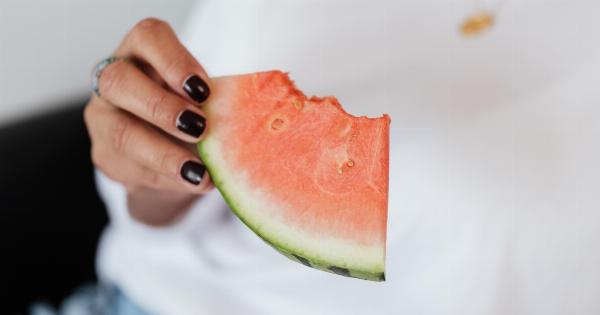Watermelon is a popular fruit known for its refreshing taste and high water content. It is enjoyed by many during the hot summer months due to its ability to quench thirst and provide a sweet treat.
However, watermelon is a perishable fruit that requires proper temperature and nutrient preservation to prolong its shelf life and retain its delicious flavor. In this article, we will explore the importance of temperature and nutrient preservation in watermelon and discuss the best practices to ensure its freshness.
Understanding the Role of Temperature
Temperature plays a critical role in preserving the quality and freshness of watermelons. It is essential to store watermelons at the right temperature to prevent spoilage and maintain their nutritional value.
The ideal temperature for storing watermelons is between 50-59°F (10-15°C). At this temperature range, watermelons can stay fresh for up to two weeks.
Harvesting and Preparing Watermelons
Proper harvesting and preparation are crucial for maintaining the quality of watermelons. Here are some essential steps to follow:.
1. Harvesting
Watermelons should be harvested when they are fully ripe. Look for signs such as a creamy yellow or light green underside, a dull skin, and a hollow sound when tapped.
Avoid harvesting watermelons too early as they may not ripen adequately and will lack flavor.
2. Cleaning
After harvesting, watermelons should be cleaned to remove any debris or dirt that may be present on the surface. Gently scrub the melons with a clean brush under running water, ensuring not to damage the skin or flesh.
3. Drying
Once cleaned, watermelons should be thoroughly dried to prevent the growth of bacteria and fungi. Use a clean towel or paper towels to pat them dry gently. Avoid leaving any moisture on the surface as it can promote rotting.
Storage and Preservation
Proper storage and preservation techniques are vital to extend the shelf life of watermelons:.
1. Store in a Cool Place
Watermelons should be stored in a cool place away from direct sunlight. A pantry or cellar is an ideal location for storing watermelons as they provide a cool and dark environment.
Avoid keeping watermelons in the refrigerator for too long, as extremely low temperatures can impact their taste and texture.
2. Use Moisture-Free Packaging
Watermelons should be stored in moisture-free packaging to prevent the growth of mold and bacteria. Consider using perforated plastic bags or wrap the watermelon in a clean, dry cloth before placing it in a storage container.
This will help maintain the right level of moisture while preventing excessive water condensation.
3. Separate from Other Foods
Watermelons release a natural gas called ethylene that accelerates the ripening process of fruits and vegetables. To prevent this, it is crucial to store watermelons separately from other produce.
Ethylene-sensitive fruits and vegetables, such as apples and strawberries, should be kept away from watermelons to avoid premature ripening.
Monitoring Nutrient Preservation
Watermelons are not only hydrating but also a good source of essential nutrients, including vitamins A and C, potassium, and antioxidants. However, certain factors can impact nutrient preservation in watermelons:.
1. Avoid Prolonged Exposure to Sunlight
Exposing watermelons to direct sunlight for an extended period can accelerate nutrient degradation. When storing watermelons, make sure to keep them in a cool and dark place to minimize sun exposure.
2. Consume Freshly Cut Watermelons
Once a watermelon is cut, its nutrient content starts to decline gradually. To maximize nutrient intake, consume freshly cut watermelons within a few hours. If you have leftover pieces, store them in an airtight container in the refrigerator.
3. Avoid Overcooking
Watermelons are commonly used in salads, beverages, and smoothies. When using watermelons in recipes, it is important to avoid overcooking them.
Excess heat can destroy certain nutrients, so consider adding watermelon towards the end of the cooking process or enjoy it raw to preserve its nutritional value.
Conclusion
Temperature and nutrient preservation are key factors in ensuring the freshness and nutritional quality of watermelons.
By following proper harvesting, preparation, and storage techniques, you can enjoy the delicious taste and health benefits of watermelons for an extended period. Remember to store watermelons in a cool place, use appropriate packaging, and consume them within a reasonable time to make the most out of these juicy fruits!.































